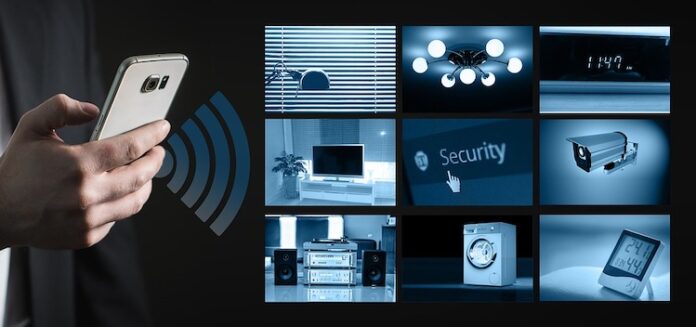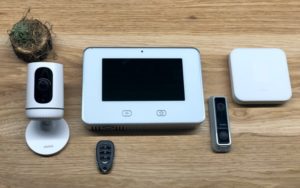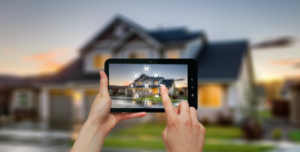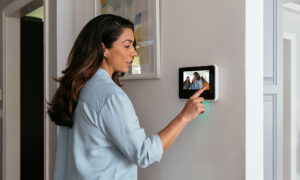Best to Choose a Home Security System will be described in this article. When selecting a security system for your home, there are multiple things to bring into account, including installation, monitoring, and more. To learn everything you need to know, see our guide below. Consider purchasing a home security system if you want assurance that your home is secure while you’re away from it or asleep at night.
With features like expert 24/7 monitoring, emergency service alerts, and more, these systems can give you peace of mind. Some even make your daily life more convenient with smart home automation.
There are many different home security systems available, however they can vary in terms of contractual obligations, setup procedures, price, equipment accessibility, and other factors. This comprehensive guide on how to choose a home security system was written by the This Old House Reviews Team and includes our best suggestions.
How to Choose a Home Security System In 2023
In this article, you can know about Home Security System here are the details below;
Factors to consider when Choosing a Home security system
Unfortunately, picking the first selection or the least expensive package doesn’t always result in the greatest alarm system for your home. When picking a home security system, there are numerous things to take into account, from the installation method to the equipment.
Professional vs DIY Installation
While some service providers will let you choose between expert or do-it-yourself installation, others won’t. Each form of installation has advantages and disadvantages.
Professional Installation
Professional installation is often carried out by knowledgeable security professionals who can guide you through the process and install equipment in places that will optimise protection. However, hiring a professional installer requires you to accommodate their schedule, grant them access to your home, and generally pay the installation fee. In most cases, fees are between $99 and $199, although the price of professional installation may be significantly higher.
DIY Installation
You won’t gain from professional advice if you DIY install, but fortunately many DIY systems come pre-programmed, so all you have to do is set them up. Peel-and-stick adhesive supplies are also available with many DIY security systems, so you won’t need to bother about making wall holes.
Costs
A home security system’s price can be broken down into a number of categories: equipment prices, installation expenses, activation fees, monitoring charges, and any additional fees that may be unstated.
Equipment prices will differ significantly between service providers and packages. Do not assume that the cheapest package is necessarily the best deal. To find the ideal fit, you need balance your priorities and money. In addition to the initial equipment cost, some carriers charge an activation fee, but not all of them do.
Choose a professionally installed system, and be ready to pay at least $100 for the installation charge. While some providers solely offer DIY monitoring, others give professional monitoring services. With monthly monitoring services, companies typically offer a range of levels of security, starting with a basic kit and ending with a more sophisticated option.
Always read the small print, especially if there are expenses there that you might not have thought of, such cancellation or reinstallation fees.
Contract requirements
Some home security systems entail signing lengthy contracts that can last up to three years. Others provide temporary contracts or don’t demand them at all. This may be advantageous if you intend to relocate or don’t want to make a long-term commitment.
Monitoring options
Choosing between DIY and professional monitoring is a crucial decision to make. Some suppliers provide both, allowing you to choose the one that best meets your unique requirements.
Professional monitoring
Experts are contacted as soon as an alarm is raised, providing round-the-clock safety through professional monitoring. If necessary, the specialists can analyse the problem and get in touch with emergency services. There is a monthly cost for professional monitoring.
DIY Monitoring
While keeping an eye on your system yourself saves you money on professional monitoring expenses, it also means you are in charge of contacting the appropriate authorities when necessary. If your alarm is activated while using DIY monitoring, you will still get alerts and notifications.
Smart Home integration
Many third-party smart home gadgets, like the Nest thermostat, Kwikset smart lock, Philips Hue smart light, Amazon Alexa, Google Assistant, and others, can be integrated with certain home security systems.
Both convenience and cost savings are possible with home automation. Customizing controls for your routine is possible with home automation. You could, for instance, programme your thermostat to change itself as you leave for work each morning.
Type of Equipment
While some suppliers only let you buy the equipment, others let you lease it. You’ll have the option to choose between the two from other providers. Determining whether your equipment is wired is important. If you intend to move or have dogs or young children who could unintentionally interfere with the equipment, a wireless system is an excellent solution.
Type of Connection
You will require a link to the centre if you decide for professional monitoring. There are three types of connections: cellphone, broadband, and landline.
Landline
With a landline, the provider connects to the home’s landline to send an alert to the monitoring station. The cheapest and most easily compromised option is connecting to a landline. You lose contact with the monitoring centre if someone cuts the line.
Broadband
You can connect to the monitoring centre using a broadband connection if you have fast internet. Unfortunately, if the power goes out, your connection is lost. Some service providers include backup batteries to ensure that your system continues to work even if the Wi-Fi connection is lost.
Cellular
The built-in chip used for cellular monitoring transmits alerts to the monitoring station using the same signal that your phone uses to make calls and send texts. Because it cannot be tampered with and the signal is unlikely to go out, it is a reliable approach. The most expensive choice, though, is typically a cellphone connection.
Common Home Security Equipment
There are several different types of equipment that all home security companies use, even if they all offer different packages and specialised technology. Below is a list of fundamentals for home security that you must have.
Control panel: This is the hub of your security system, where you can activate and disarm your system, manage your smart devices, and more. It connects all of your security equipment.
Door and window Sensor: Devices that inform you when a door or window is opened include door and window sensors.
Motion detectors: These pick up movement within a predetermined radius of the home.
Security cameras: Several suppliers offer both interior and outdoor security cameras that can stream live video from inside your home or outside your door. Some even permit two-way communication so you can converse with visitors at your door or fend off invaders.
Doorbell camera: This camera records visitors as they approach your door and notifies you via push notifications. You may use two-way talk on some doorbell cameras to communicate with visitors at your door.
Glass break sensor: To warn you of an intruder, this gadget hears shattered glass and emits a loud siren.
Smoke detectors: These devices can spot smoke and warn you if there is a fire inside your home.
Carbon monoxide detector: This detcts (CO) is a gas that can be found within your home.
Flood/leak sensors: can help you prevent flooding damage and pricey repairs by spotting excess water in your home.
Temperature sensors: These sensors keep an eye out for sudden temperature variations in your home, such as those caused by broken HVAC systems or frozen pipes.
Panic buttons/pendants: When pressed, the panic button/pendant summons emergency assistance. They are designed for elderly individuals who live alone and for people with medical issues.
Our Top Recommendations for Home Security Systems
The top three home security system picks from our list all include features like comprehensive packages, high-end equipment, and more. They each have particular advantages of their own. Find out more below. Also check Cybersecurity
ADT Home Security
One of the greatest home security systems on the market is provided by ADT Home Security. The company serves millions of consumers and has more than 140 years of experience. ADT also provides the largest nationwide network of professional monitoring facilities, a practical six-month money-back guarantee, and professional monitoring around-the-clock.
Vivint Smart Home Security
Smartphones and a wide range of third-party smart home products, like the Nest thermostat, Philips Hue smart light, and Kwikset smart lock, can be linked with Vivint’s sophisticated home security systems. Security cameras that use sophisticated camera analytics to alert customers when individuals and parcels are at their doorway are among the most cutting-edge equipment offered by the service. Also check benefits of Vpn
Alder Home Security
Alder operates in a distinct manner from the majority of home security companies. Alder doesn’t provide a selection of pre-set packages with particular equipment, in contrast to its rivals. Customers can instead design their own packages. Alder also boasts one of the fastest average response times in the sector, at 3.4 seconds.










